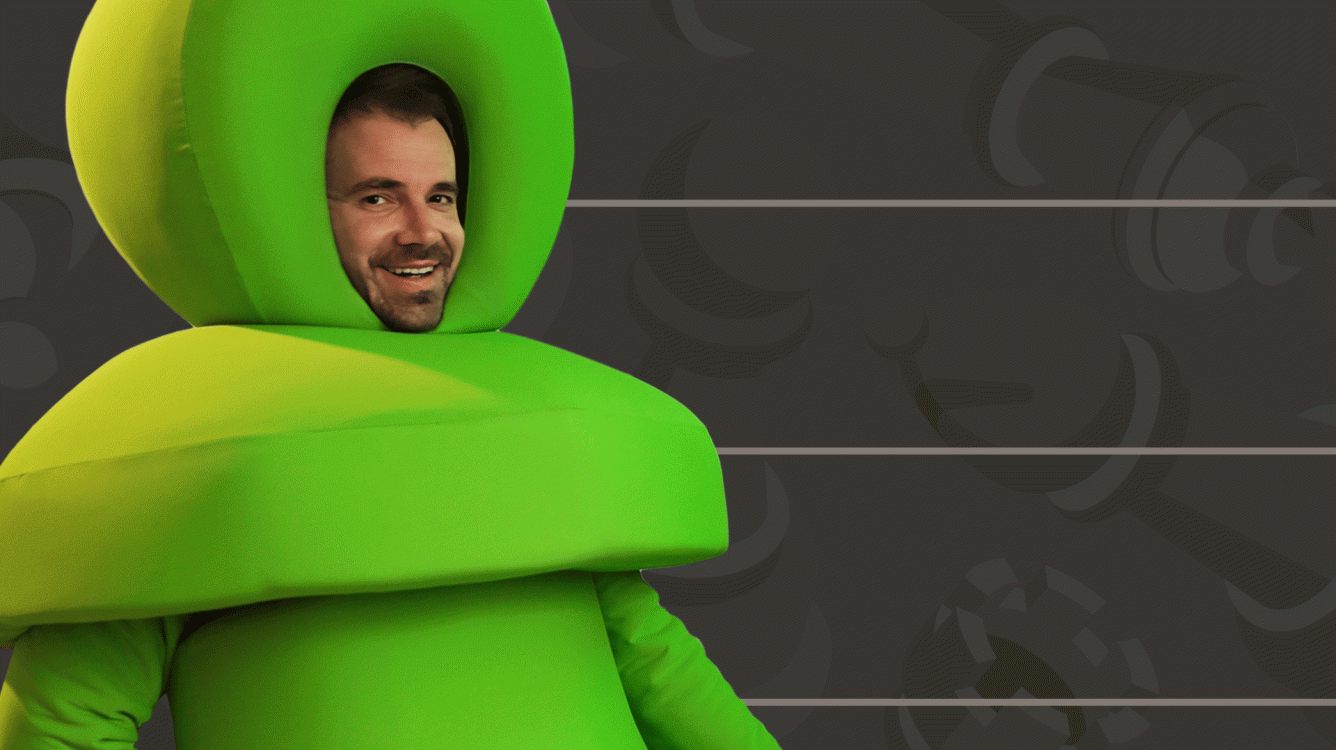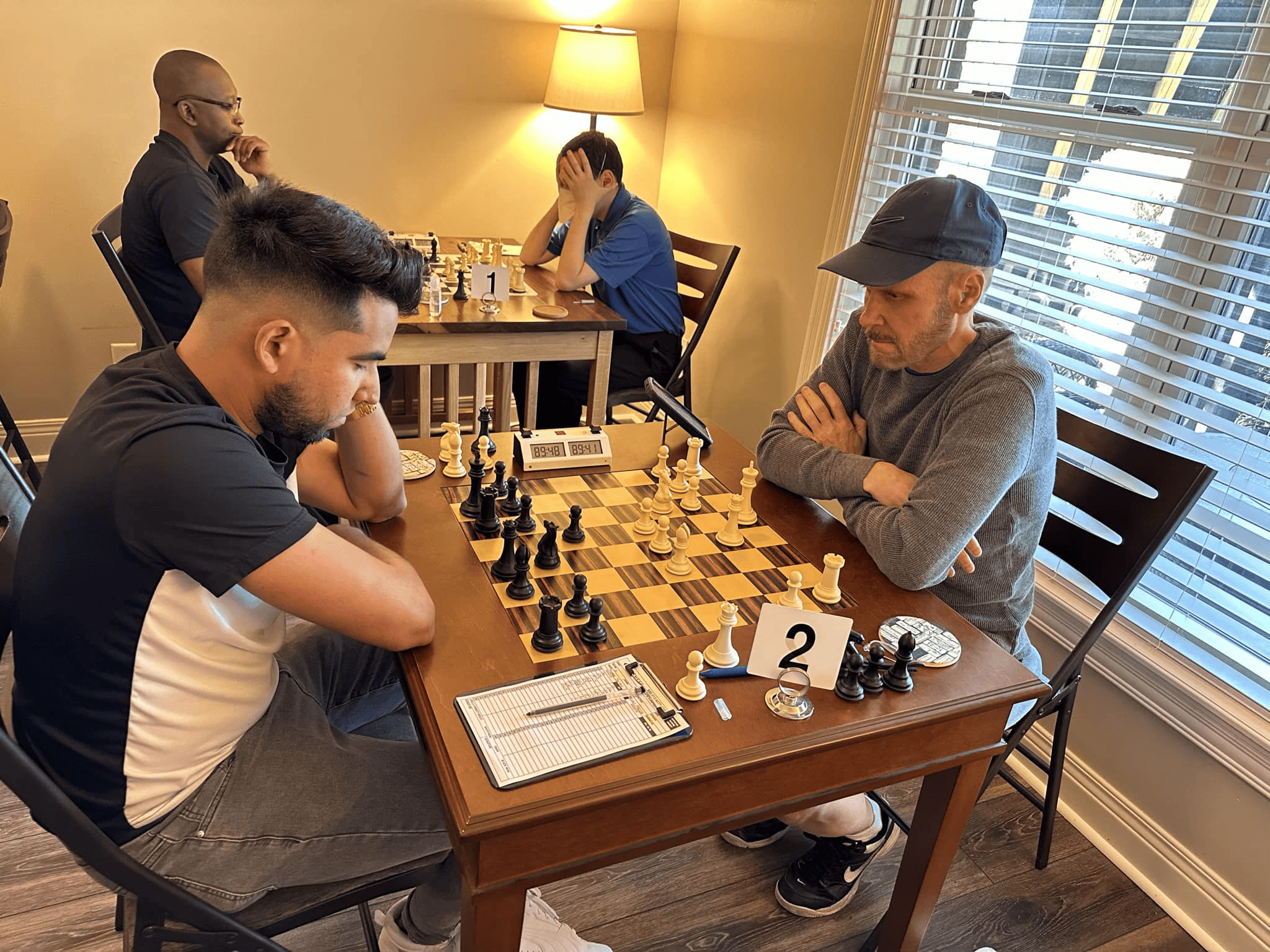
Can Adults Improve At Chess?
In 2018, Perpetual Podcast host Ben Johnson interviewed CM Andrzej Krzywda, a Polish chess player in his late 30s who, after decades stuck at a FIDE rating in the 2100s, had a remarkable breakthrough. Over the course of a year, Krzywda gained 150 rating points, rampaging to a new peak of 2296 FIDE, and even earned an IM norm in the best tournament of his life. Thus began the show’s "Adult Improver" series, which has now featured dozens of adults striving to get better at chess at various ages and strengths.
It turns out people care about this topic. A lot. Chess Twitter consists mainly of adults of every chess level, all sharing results, training regimens, and thoughts on chess improvement. People are particularly anxious to know what kind of improvements are expected, or possible, at various ages. But I suspect that more specifically, people in the social media era experience endless comparisons to others, and they want to know if their progress is good enough on its own terms.
For years I have been watching social media speculate on this topic: If you study X hours a day for Y years, you can reach rating Z. So-and-so reached rating A at age B, so anyone can do it. Adult responsibilities/neuroplasticity/cognitive decline are all/some/none of the reasons that adults seem to improve less than kids.
Many of these conjectures often conflicted with my own intuition as a chess player and stubborn adult striver. (I am a 36-year-old NM currently rated 2250 USCF). Worse, they often appeared to be imagined, not based on real examples. I wanted to know the truth—what HAVE people done in chess in adulthood, and in the later decades of life?
My Method
I combined publicly available data from FIDE and USCF to create the largest data set of OTB rating progress by age that I could assemble. My set included around 8,000 players.
- It only included players with FIDE ratings, since FIDE publishes birth year and USCF does not.
- US players tend to get FIDE ratings at advanced levels, so my data was heavy on intermediate and advanced players, and light on beginners. My data was particularly light on adults who started as complete novices in adulthood—while interesting, these players often don’t get FIDE ratings, so I don’t know how old they are.
- I based rating growth on USCF tournament history, which gives a much more dense and complete picture of a player’s history, especially at the amateur level.
- Online records at USCF start in 1991, so my data starts there.
- I used my own judgment to manually inspect and exclude certain cases I concluded did not represent true strength increases, such as anomalous provisional ratings, immigrants joining the rating system and immediately leaping to their pre-existing level, players who had only a partial rating history due to the 1991 cutoff, and other odds and ends.
It is important to understand that this data is by no means a complete and final say on what adults can achieve, just one big picture that shows historical trends in the United States. Some players have already sent me amazing cases that eluded my search, and I encourage anyone to share more.
Gains After 25
I chose my cutoff for adulthood to be 25—a point when the prefrontal cortex has fully developed and most have settled into adult jobs and life patterns. I wanted to know who in this range had made large increases, or seen increases to high levels.
I found well over 1,000 cases of 200+ point improvements made in this age range—some substantial adult improvement is actually not so uncommon. I also found nearly 200 cases of 500+ point improvements made in adulthood—players gaining so much strength they basically became completely different chess players. While these players peaked at all different ages, their median peak rating age came in at a middle-aged 41. I hope that this observation encourages readers that there is plenty of precedent for fantastic rating gains in adulthood, throughout the club level and age range.
I also found several dozen players throughout this 30-year period making 200+ point jumps into master-level ratings—2200+ USCF—in adulthood. The most impressive type of leap I found here was shared by a few players. NMs Jeffrey Arnold, Igor Nikolayev, Nick Raptis, and Peter Minear were all players who grinded between their 20s and 40s from ratings around 2200 USCF to over 2400. I can tell you from experience that the difference between 2200 and 2400 is large and intimidating.

In each case, this improvement took around a decade; importantly, every one of them played continuously throughout this time.
Gains After 50
As you might predict, rating improvements became less common with every decade of life. Still, I found nearly 200 of examples of large increases made in a player's 50s or later. These included 22 increases finished in a player’s 70s, and two astonishing examples—Yefrem Zats and John Jaffray, the latter still active today in California—of players who completed 200-point rating increases in their mid-80s.
There were many other inspiring stories here. To name just a few of them:
- Bill Arluck, a tournament veteran who fluctuated in the 1900s and 2000s until hitting an all-time high of 2167 at age 73
- Thomas Hoopengardner, who started in the 1600s in his 50s, played nonstop for decades and peaked at 1999 at age 71.
- Renate Otterbach, who was rated 696 at age 57 and peaked her rating at 1396, aged 63.
- Michael Katz, a Belarusian immigrant who peaked his USCF at 2296 at age 58, maintained this level for a decade and holds the distinction of multiple wins against your humble author.

There were dozens and dozens of these. Big improvements are clearly less common after 50, but there are still people out there earning them.
Making Master
I was particularly interested in the ages at which people make the coveted national master title. In America, this is earned by reaching a USCF rating of 2200. Players typically become masters young. The median age at which players make master is just under 18, and in recent years this has accelerated to just under 16. Still, some adults are out there getting it done:
- A small number of players—a single digit between one and eight—reach NM in their 30s each year.
- An even smaller number—between zero and three—reach NM in their 40s each year
- Newly minted 50-year-old NMs appear less than once a year
- A couple of rare players reach NM aged 60 or above each decade.
- Notably, new adult masters have slowed down since COVID. Since 2020, no one above the age of 40 has reached NM, and only two players per year have done it in their 30s. It will be interesting to see if this trend continues.
| Player | Born | Reached 2200 | Age |
| Velazquez, Kevin | 1989 | 2023-05-29 | 33.99 |
| Wofford, Matthew | 1987 | 2023-03-19 | 35.8 |
| Passen, Brett | 1991 | 2022-11-20 | 31.47 |
| Herbst, Richard | 1991 | 2022-06-20 | 31.05 |
| Iinuma, Paul Y | 1985 | 2021-06-20 | 36.05 |
| Cohen, John | 1987 | 2021-05-08 | 33.94 |
| Shapiro, Bryan | 1989 | 2020-07-28 | 31.16 |
| Jones, Daniel | 1987 | 2020-02-02 | 32.67 |
| Shevelenko, Oleg | 1976 | 2019-10-21 | 43.39 |
| Malkiel, Daniel | 1980 | 2019-10-20 | 39.38 |
| Cates, James Step | 1984 | 2019-08-22 | 35.22 |
| Wynn, Charles R | 1984 | 2019-02-03 | 34.67 |
| Kim, Wan | 1966 | 2019-01-25 | 52.65 |
| Free, Graham | 1981 | 2019-01-07 | 37.6 |
| Arnold, Justin | 1988 | 2018-12-02 | 30.5 |
| Davidson, Jesse | 1981 | 2018-10-26 | 37.4 |
| Flores, Andrew | 1983 | 2018-10-14 | 35.37 |
| Ivanov, Aleksandr | 1970 | 2018-07-21 | 48.14 |
| Robledo, Mark | 1981 | 2018-05-28 | 36.99 |
| Cousins, Robert P | 1987 | 2018-02-03 | 30.68 |
| Warusawitharana, Missaka | 1977 | 2017-11-26 | 40.49 |
| Ismakov, Arthur | 1961 | 2017-07-08 | 56.1 |
| Richardson, James | 1982 | 2017-07-04 | 35.09 |
| King, Robert | 1983 | 2017-04-12 | 33.86 |
| Glick, Michael | 1983 | 2017-02-19 | 33.72 |
The most fantastic late master since the USCF’s electronic records begin in 1991 is Fred Wilson, a well-known chess author, teacher, and bookseller from New York City, who earned the NM title at the breathtaking age of 71. Fred exhibited a pattern I saw again and again in players who achieved late rating peaks:
- He had an existing level of strength, achieved much earlier in life.
- He managed to maintain this level for decades.
- Finally, he made a little push, a couple things went his way, and he budged his rating to an all-time peak.
This pattern is so common I began calling it “the Fred Wilson shape,” and it is overwhelmingly the way that people reach peaks in late decades of life. When one has been playing for decades, it is not possible to become a brand new chess player. But it does seem possible to be ruthlessly persistent, catch some good results, and make a push at almost any age. This ought to give hope to striving seniors everywhere.
Becoming a Professional
It is at this point I should state the harshest reality I found in this project. I found zero cases of adults making large leaps into the professional—IM or GM—levels in my data. Players who cross 2500 USCF hit 2200 and 2400 when they are young—by age 21, often well before that. Even late arc professionals such as Jesse Kraai, Dean Ippolito, or Dave Vigorito—the latter a strong IM and a professional with a spectacularly long career of steady improvement—were already strong masters by age 21.

As in sports or other highly competitive disciplines, the journey from beginner to professional seems to happen mostly in childhood and adolescence. I am aware that UK players John Shaw and Jonathan Hawkins are often mentioned as exceptions here, but I found no such cases in my American data set.
Be Like Mike
Now that I’ve delivered the bad news, I’ll end with the good.
There was one player in particular that I found during my research who did something that, before this, I would have cynically dismissed as impossible. His rating trajectory and his personal attitude, which I learned about by connecting with him on Facebook, ended up shaping what I took away from this whole project.
Michael Johnson of Kentucky played his first USCF tournament in 2001 at the age of 36. His first provisional rating was 981. I have found many players who appeared to have large rating gains by starting with a fluke provisional rating, then quickly snapping to their true strength. Michael Johnson was not one of these people.
Six months later, his rating settled at around 1050. Then he started grinding chess forever. Four years later, he cracked 1700 for the first time. He got stuck here, but was undeterred. After another four years, now in his mid-40s, he crossed 1800. Had he stopped here, he would have already been one of the most dramatic adult improvers to appear on my spreadsheet, but he did not. Another four years passed, and he reached 2000 near age 50. Michael Johnson peaked at 2135 at the age of 56, finishing an official gain of more than 1,000 rating points, almost reaching the level of master—and he did it all in his 30s, 40s, and 50s.
Michael Johnson has played over 400 tournaments since he started playing over-the-board over 20 years ago. This is an average of more than one tournament a month for this whole period. I friended him on Facebook to learn more. On his Facebook feed, I found a stream of chess pictures, positions, news stories, and events. This dude loves chess, and he immerses himself in it. He does not seem anxious about what his rating should or could be. He is too busy playing and enjoying chess for that.

With Michael and others in mind, I formed some basic principles shared by successful adult improvers:
- Play A LOT. This is more important than studying, coaching, chess psychology, or anything else. Overwhelmingly, the improvers I found had jagged ratings graphs for decades, meaning that they were constantly playing.
- Care about chess, not your rating. I’ve been fortunate to know many of the adult improvers on my list, and I looked up others on social media. Aside from playing all the time, these people are deeply invested in the quality of their chess. Many of them have told me they were too busy focusing on chess to worry about rating. They are curious. They like analyzing their games. They have chess blogs, book collections, particular areas of the game that they are experts in. These things, not rating obsession, occupy their time.
- Never, ever, ever give up. All of the people above experienced setbacks, sometimes big ones. When this happens, it is easy to get frustrated, discouraged, or nervous that we are washed up and can no longer compete with the kids. These people did not do that. And this gave them a chance to catch a good run later.
I’ll end with a message from Michael Johnson, the king of the adult improvers:
I play chess because I love chess and I really like all the friends that I've made over the years playing chess. Most chess people are really good people and [I] am grateful for all the friends that I've made over the years playing chess. My rating isn't the reason that I play chess. It's just a byproduct of doing what I love. I'm in a temporary dip right now as I recover from some temporary and unexpected health issues from last year, but all my games are still very competitive and I have no doubt that I'll be back over 2100. I think I'm on track this year for playing more chess in one year than in any of my previous years of playing chess. And the best is yet to come. I have no doubt. After hearing the podcast about Fred Wilson crossing the 2200 barrier at 72 years old, I'm confident that I will do the same and hopefully earlier.
All I have left to say is: Good luck out there!
Note: My data can be viewed at this Google Sheet.
Does reading about these inspiring players give you hope to improve? Let us know in the comments below!






